Articles and Publications
Nora Hall, A Life's Work
This article is from Issue 5 of Woodcraft Magazine.
Trained in Holland during World War II by her father, a master woodcarver, Nora Hall still sees carving as a way to earn a good living. Looking back, her amazing body of work betrays the fact that she’s never been just a laborer; she’s always been an artist.
Nora Hall has been commissioned to carve a hunting scene into a wooden panel, and she’s already photocopied from a book some old paintings of dogs taking down a stag. They will help her sketch out the panel in charcoal, but first she’ll visit the library for a little more research.
Nora’s design and drawing talents come into play long before she makes her first cut into the wood. When she does start to carve, the work moves along swiftly.
“I have a special way of carving like the old masters carve,” she said, her charming Dutch accent still intact half a century after immigrating to the United States. “It’s a more direct, professional way. Otherwise you can’t make any money.”
The hunting-scene panel will end up inside a multimillion-dollar home in or around Troy, Mich., the Detroit suburb where she lives and, at age 83, still works. She keeps her own tidy house on a quiet street, working in her garage studio, sometimes on pieces of wood that are too big and heavy for her to move alone.
She carves with remarkable efficiency, deftly switching tools from right hand to left, to reach into tight spots. Nora, who has long offered instruction in classical European carving, teaches her students to work this way: quickly and ambidextrously.
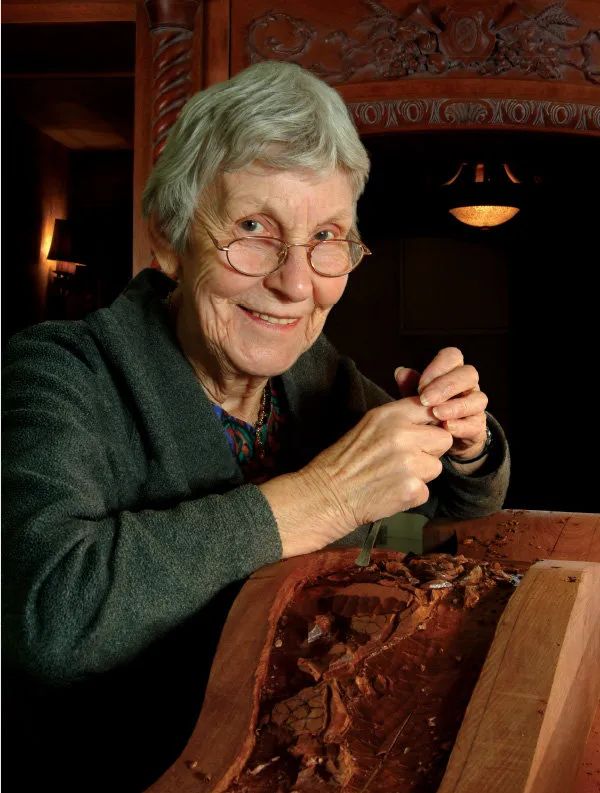
Historical accuracy
Nora was 18 years old when the Nazis invaded the Netherlands. Giving up her dreams of attending art school, she apprenticed herself to her father, master woodcarver Johannes Leereveld, as a means of helping support her family.
“I started at 11 o’clock in the morning,” she recalled of her first day carving. “I had been cleaning houses, and I wanted to try anything else. I just loved it right away. I didn’t stop until 10 o’clock at night.”
The Leereveld pair carved tirelessly – mantelpieces, doors, chairs, tables – while the Germans searched Dutch homes and deported more than 100,000 of Holland’s Jews. The Leereveld residence was a small attachment to a larger house, so it often was overlooked during raids. The family risked their lives to harbor Jewish and dissident refugees, and Nora often rode her bike to nearby farms to secure food for a number of people staying there.
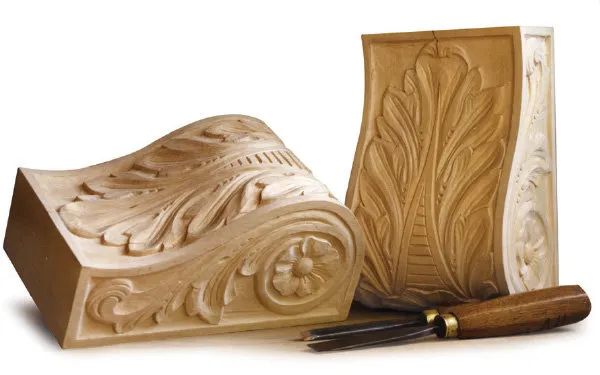
“It kept them alive,” she said.
It was in this atmosphere of hardship and fear that Nora’s carving skills became ingrained in her mind and body.
“We carved mostly oak, which was very hard and splintery. My arms were all sore,” she said. “We also worked sometimes in beech, which was even harder.
“There was lots of work from furniture factories. It was fun, because we got paid for it. Once we established a price, I would love to do it faster, because then we would make more money.”
Ornate crests and crosses dominated their work, and from the start, Nora sketched out many of her own pieces before carving them. She was especially good at drawing the Gothic style, and created her own designs. By the time the war ended in 1945, Nora was well known as the only female woodcarver in Holland.
“I was a professional,” she said. “I still am, of course.”
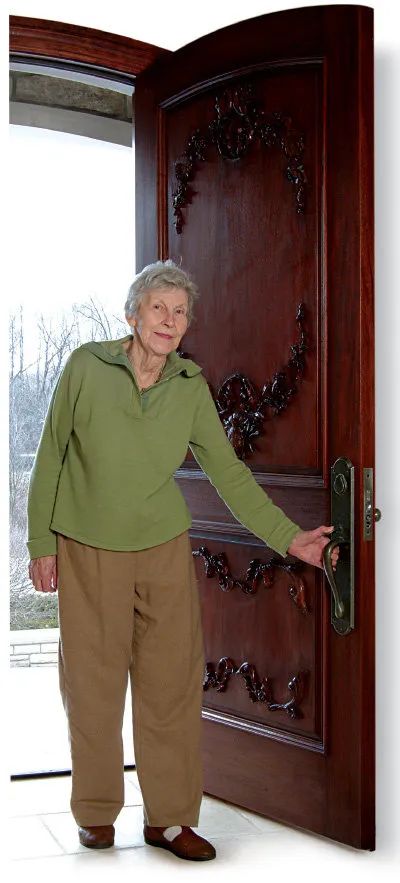
Home and family
Nora lives alone now, just down the street from her son, Ibo Nater, a medical doctor. She often shares the work on carving projects with another son, Wendell Langeberg, of West Hollywood, Calif., who also maintains her Web site, norahall.com. Nora’s daughter, Renée Mestan, books classes and accompanies her on teaching jaunts across the country. Her sons Sven and Irven are a writer and a nurse, respectively.
Nora’s phone rings off the hook. She has a toll-free number for students and other carvers, and she often sits by a carved coffee table in her living room, talking intently to friend and stranger alike, about carving tools, carving techniques and sticky problems.
She also enjoys spending time outside in her spacious backyard, and cooking – she loves to prepare and eat natural foods. She recently carved the fronts of the cabinets in her own kitchen, a viny, organic motif in mahogany.
Her house is adorned with carved details, like the “N” and “S” on her front door. “S” is for her husband, Sam Hall, who developed Alzheimer’s and now lives in a nursing home. Nora recently took a hiatus from carving to tend to her ill husband, who is 15 years her senior. Now she’s back at work, but misses his companionship.
“All our old friends are dying,” she said sadly. “It’s all just memories.”
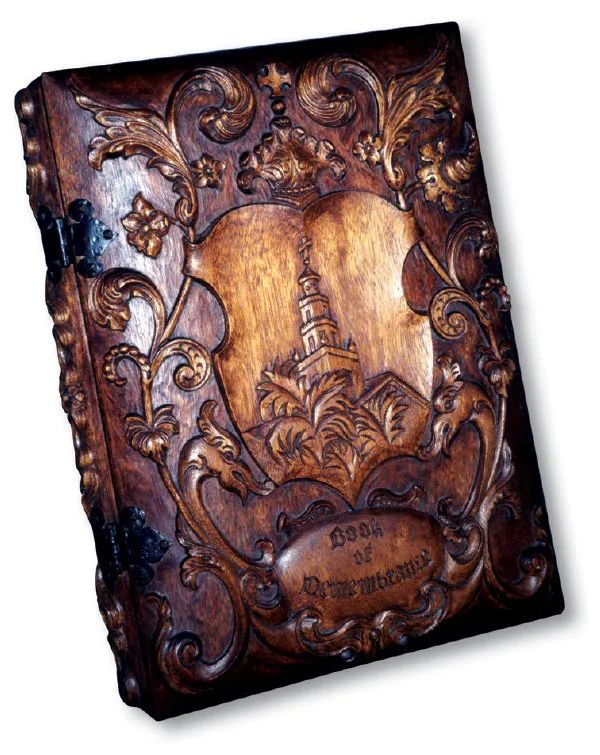
Traveling abroad
Following the war in Europe, Nora married her first husband, Leo Nater, and gave birth to three children: Ibo, Sven and Nanna (Renée). But marital problems ensued, the couple split up, and Nora moved to the United States with Ibo, her youngest son, and Charles Langeberg, a vacuum cleaner salesman who had stopped on a sales call and won her heart.
Renée said the separation was difficult; her mother had tried many times to move to the States alone with all three children.
“As a child, you always hope your parents will get back together,” Renée said. “My mother is who she is. She’s an artist. She wanted her freedom.”
“At the end of 1956 at Christmas, we came on a big ship into the New York Harbor,” Nora recalled. “None of the union workers would work on Christmas Day, so we had to stay on the ship. They brought out a huge tree and a great dinner. We stood on the ship and looked at all the cars. In Holland, nobody had a car except the doctor. It was so interesting, looking at all the lights and the cars and the statue.”
From New York City, the trio boarded a train for a three-day trip to Arizona with only $14.
“We bought lots of bread, liverwurst and butter,” Nora said. “One time, we had soup in the dining car.”
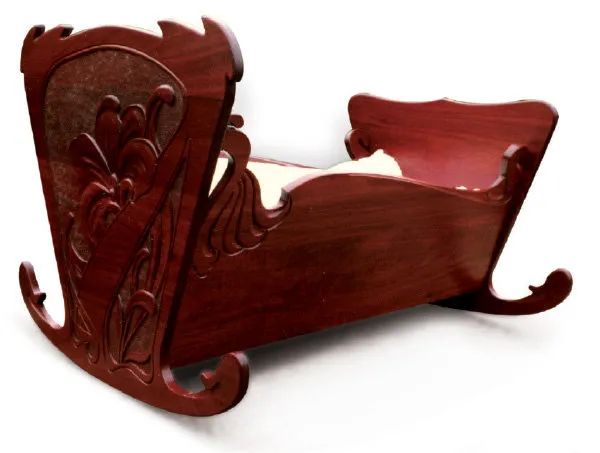
Settling in Phoenix, Nora received her first commission as an American carver: a church’s book of remembrance.
“I had just come fresh out of Europe, and they paid me $225,” she said. “It took weeks, of course. I don’t know what we did with the money. We needed it real bad.”
For a while after that, Nora had no work at all. The Phoenix Elks Club saw an article about her and built her a workbench. An odd job cropped up here and there; they moved again, to Long Beach, Calif., where they were joined by Sven and Renée.
Oddly enough, the family was reunited on the set of a television show called “It Could Be You.” Nora’s U.S. sponsors had clandestinely arranged to fly Sven and Renée from Holland to live with their mother, and surprise her on the show, whence she had been lured as a member of the studio audience. The curtain came up, revealing a windmill in which the two children were hiding. And the cameras rolled.
“We went to school in Long Beach and didn’t know a word of English,” Renée recalled. “Sven had read in Holland about cowboys and Indians, so he wore a cowboy outfit to school.”
As the family got reacquainted, Nora looked for more work.
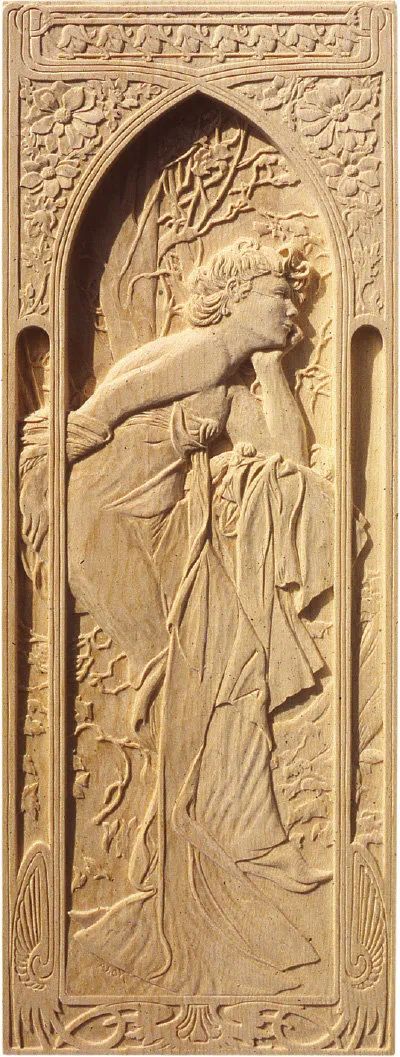
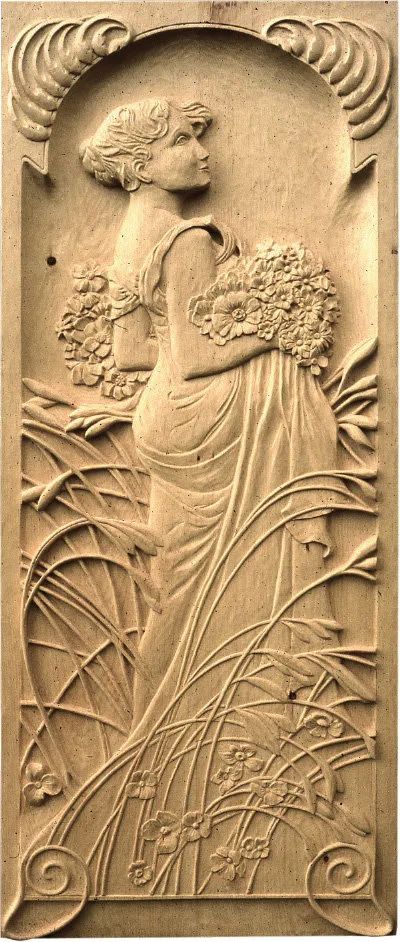
“In the ’60s and ’70s people started getting interested in antiques,” she said. She filled in missing carved elements for restorers and collectors. She also took up teaching adult education classes in woodcarving at a local high school, for the then-impressive rate of $8 per hour.
“At that time, it was a lot of money, and I got better and better at teaching,” she said.
From time to time, a big commission would crop up, like one for work on Hugh Hefner’s personal bedroom and bathroom, in 1963.
“Somebody recommended me to him, and it was only a half-hour drive to Bel-Air.” She worked for “weeks and weeks” on carving dolphins and girls into wooden wall panels, as well as salvaging some poorly-done statues by another artist.
“People would do the craziest things to try to get in there,” she recalled of the Playboy Mansion grounds. “But I would just drive up to the gates and they would wave me through.”
Nora and Charles had difficulties with their marriage and also divorced. During their stay in California, they gave birth to three sons: Eddie, Irven and Wendell.
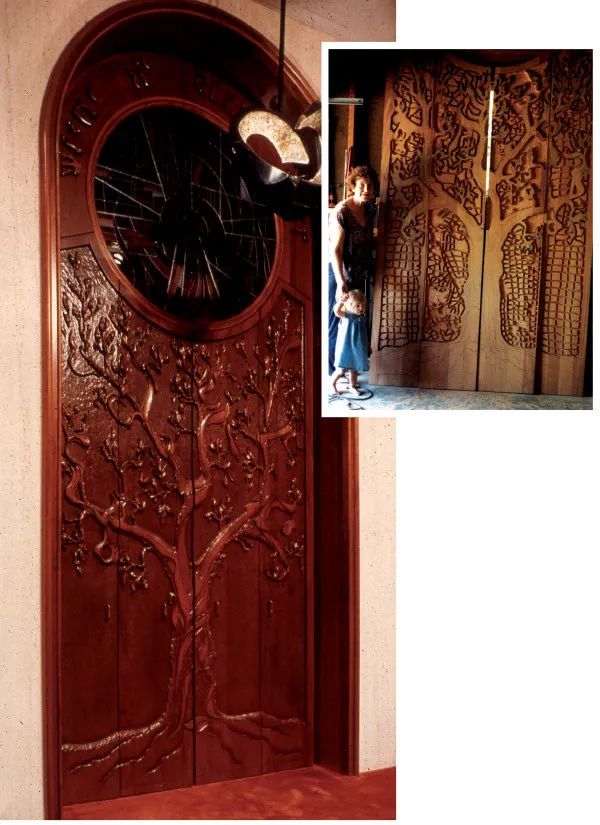
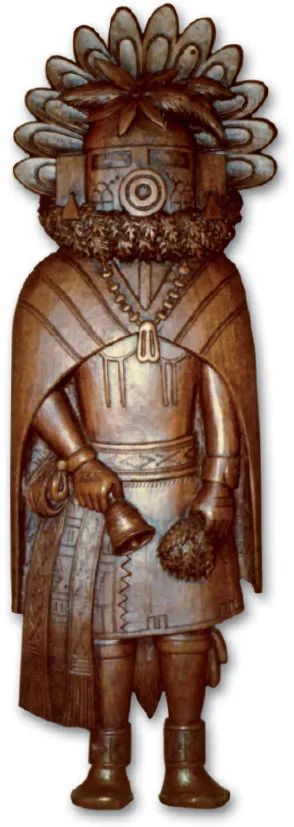
Mother-son team
Of her six children, Wendell is the one who followed in Nora’s footsteps to become a carver. Now they share work projects by shipping pieces between his home in California and hers in Michigan.
Wendell has proven to be an important part of her carving career. He helped her arrange and work on one of her first high-end commissions – a large lion’s-head mantelpiece in an Aspen, Colo., home.
“He said to me, ‘Mother, you have got to start doing the work you want to do, when you want to do it.’ He was right. I had been taking jobs that paid too little because I needed the work. Wendell knew that I needed to protect my reputation and only do high-quality work. So we said, we’re only going to accept jobs if people can afford it.”
The pair worked together on a replica of a highboy in the Metropolitan Museum of Art. They photographed it from every possible angle, and Wendell made clay models of its elements, including a bust which, lacking detail in the original, he modeled on his niece (Nora’s granddaughter).
“If I’ve done anything to help my mother, it’s in the area of working with clay,” Wendell said. “I was able to conceptualize and work out three-dimensional problems in clay first. That helped us speed up the completion of a job; we could also measure where we were going.”
While Nora received true apprentice-master training in the classical sense, Wendell said the training he got from his mother was less formal.
“She used to have to make the same cut hundreds of times. I just kind of jumped right in and started working,” he said, adding that his style is more rugged than Nora’s and more like her father’s carving. “My finished product is not so refined. Cuts tend to show in it. She loves that; she thinks it’s very masculine.”
But when it comes to sketches, Wendell creates defined and detailed ones, while Nora’s are more informal.
“In our drawings, we’re opposite from how we are in carving. And the clients always pick her drawings. They love them.”
In 1990, Nora and Wendell had two days to finish a large piece and decided to have a contest.
“My mother said, ‘Let’s get this done tonight and we’ll have tomorrow off,’” Wendell said. They carved busily into the night but Wendell, then 29, collapsed into bed at about 2 a.m. Nora worked until well past daylight.
“My mother has a very strong character to her work,” Wendell said. “When you go to museums you recognize it in antiques.”
“Wendell’s doing a lot of carving now,” Nora said. “Sometimes it’s two months’ worth of work and I can’t do it all.”
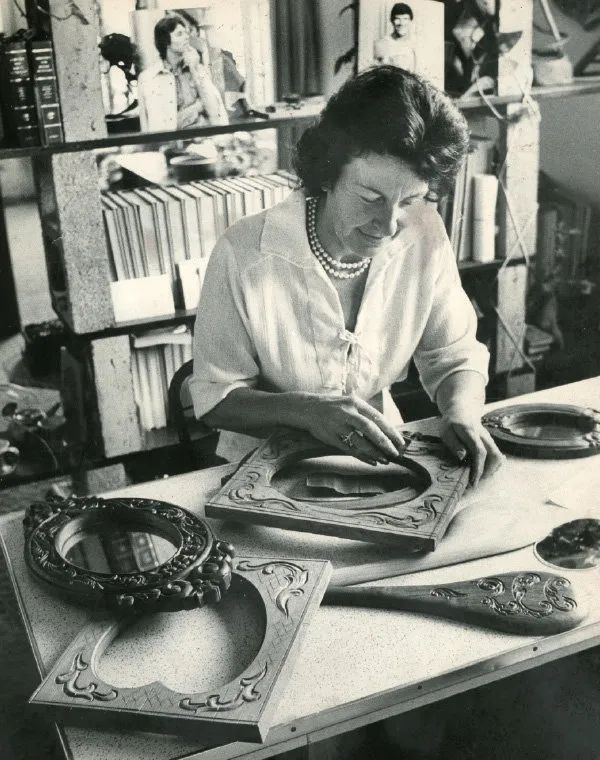
Many of her latest commissions have come through a Troy, Mich., company, McLaughlin Millworks & Interiors.
“Our customers love her work,” said owner Doug McLaughlin. “People love the fact that there’s a story behind it, that it was carved by a third-generation Dutch woodcarver. And they love the fact that she’s a woman.”
McLaughlin, a carver himself, has enjoyed a give-and-take relationship with Nora.
“We challenge each other,” he said. “I know she challenges me, and I like to think I challenge her.”
Rocky Mountain high
Nora was raising three children alone in the late ’70s when she met Sam Hall, who was working at a lumberyard in Hermosa Beach, Calif. Their whirlwind romance resulted in a Las Vegas wedding, a huge party back home, and 27 years of companionship. They lived and worked happily in California – Sam was a furniture maker – until 1984, when they moved to Colorado. Nora accepted several large commissions, and also found herself in close proximity to the famed Anderson Ranch Arts Center, where she thought she could teach classical European carving.
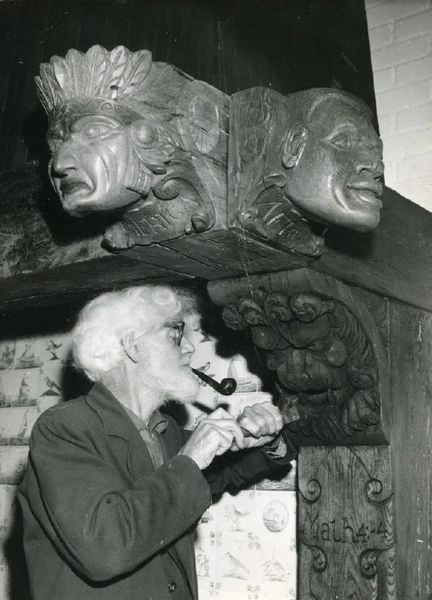.jpg?fit=outside&w=1600&h=2224)
“I wrote them a letter and sent pictures. They said no, and sent all the pictures back,” she said. “I thought, I’ll send them my slides; that will be a lot better. They looked at them, and called me right away and said, ‘You have to teach here!’”
It became a family tradition to join Nora at Anderson Ranch; the school always set the family up with a whole condo.
“I thought, this is a lot different than adult education!” she said.
During her first week there as a relative unknown, 22 students signed up. Nora’s methods generated so much interest, she was asked to stay for a second week, and then a third.
“It was almost too much! It was a lot of fun, and the students loved it.”
If carving is Nora’s first love, teaching comes in a close second. Her lifetime of carving has resulted in a profound and intricate understanding of the craft – which she loves to share.
“I always sound so cocky, but this is true: I can see the struggles of many people who are self-taught, because they don’t have the right methods,” she said. “I always felt so sorry for them, because they have wood that breaks out, they have accidents and they don’t realize the fastest way to get to the goal.”
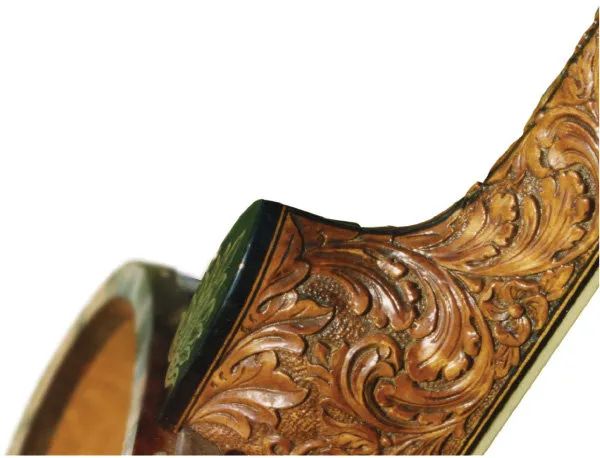
Nora introduces her students to “the principle of the broom,” explained here, a concept that helps carvers work with grain direction and create smooth elements.
Also a tenet of utmost importance: Never, ever make a stop cut.
“Stop cuts make the wood weak, and it breaks out all over,” she said.
Many beginning or self-taught carvers use stop cuts or deep cuts with a V-tool to define the edges of whatever they’re carving, she noted. But a better technique is to make a light outline with a sharp V-tool, and then quickly remove a quantity of wood from around the outside of it, smoothing up into the outline so that it disappears. Then carve the raised element, saving the absolute definition of the outer edges until last. In this way, the carving work defines the edges of the element, and not the other way around.
Nora’s ideas about lighting are also a part of her teachings. Wendell said that a lot of people use overhead fluorescent lighting in their shops, when a better alternative would be to pull your workbench up to a window.
“My mother is all about creating shadow in wood,” he said. “We’ll often be working on a carving, and we’ll turn it around 180 degrees. When the light shines on it from a different direction, you can see what you need to go back and fix.”
“It becomes easier and easier when you learn these methods,” Nora said. “The old carvers in Europe are so protective; they just wanted to keep it for themselves and would never teach you.”
In April, Nora embarked on her latest teaching stint, appearing at store classrooms and schools from California to Connecticut through the summer, with several dates also scheduled for the fall. Her series of woodcarving videos is being re-released on DVD, available at norahall.com. She plans to write an instructional book on carving methods within the next couple of years.
Nora is a soul who has accumulated a colorful array of life experiences, all the while steadily advancing the art of carving.
“There’s something about mastering the wood,” she said. “You can’t master people, but you can master wood.”
The principle of the broom
Fig. 1: Grain usually runs in a more-or-less straight line. When using a V-tool to carve an outline of your work, cutting straight across or with the grain can be done from either direction.
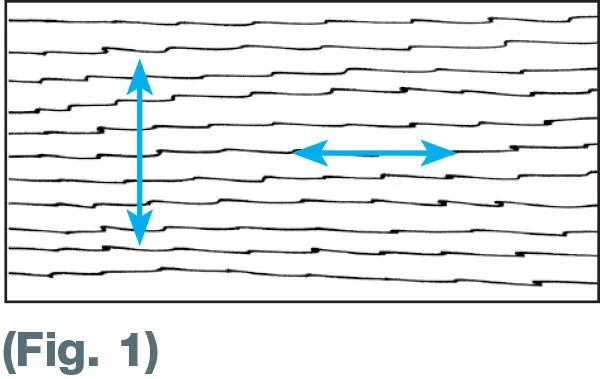
Fig. 2: However, cutting at an angle is different. Imagine the grain along your cut as the ends of two brooms meeting. Here, cutting from the bottom up, you will encounter resistance from the right-hand side as you cut against the angle of the “broom straws.” The left-hand side of your cut will be much smoother.
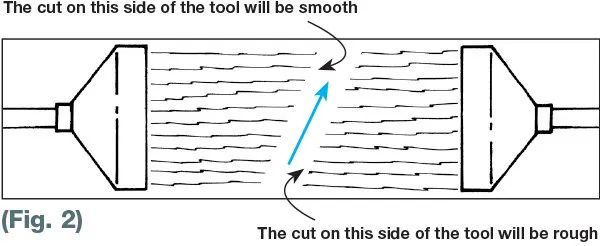
Fig. 3: To carve a circle with a smooth outside edge, make your cuts “with the broom” as indicated. (Learning to carve from both sides, with both hands, is essential to incorporating this technique.)

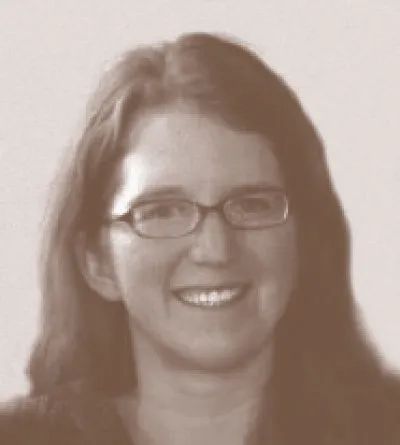
Sarah Brady
Sarah Brady is an amateur woodworker and associate editor of Woodcraft Magazine. She lives with her fiancé Matthew and their dog and two cats; she enjoys music, movies, gardening, cooking, reading, hiking and camping.
